#951 New wine in new bottles
Valleys of Wine: A Taste of British Columbia’s Wine History
by Luke Whittall
Vancouver: Whitecap Books, 2019
$29.95 / 9781770503168
Reviewed by Bill Engleson
*
 I cook with wine. Sometimes I even add it to the food. — W.C Fields
I cook with wine. Sometimes I even add it to the food. — W.C Fields
What wine goes with Captain Crunch? — George Carlin
I like the wine and not the label. — Schitts Creek
Wine! I began with Calona Red in my tarnished youth. Jugs of the stuff. – W. Engleson
…and speaking of my tarnished youth, in 1963 I toured Europe for the summer with three hundred not-all-that-worldly Canadian youth. Prior to that trip (I was sixteen) I had hardly ever been let out of the house. Long story. Nevertheless, having recently seen Dr. No, the first significant James Bond flick, I thought I knew what sophisticated was, and, armed with that cultural signpost, I initially avoided the smooth pleasures of wine on that European junket and sought out martinis at every opportunity.
And there were plenty of opportunities.
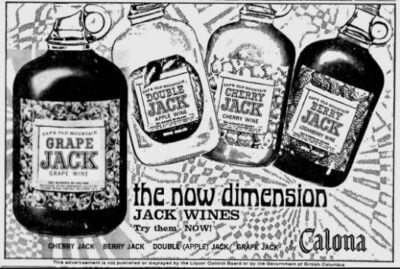
Back to the subject at hand.
My review copy of Luke Whittall’s, Valleys of Wine: A History of the BC Wine Industry, arrived on Day 3203 of my self-isolation from the Calonavirus.
Sorry! Make that Coronavirus.
Okay. I exaggerate. It was somewhere around April 1, 2020. While other obligations had occupied me, the weather had become, by Easter, a warmish blue-skied portrait and I slowly, very slowly, started burrowing into the many Valleys of Wine. Incidentally, on a note of factual currency, if it is not absolutely evident, I also began to read this jam-packed book and jotting down a few notes during the beginning days of COVID-19. We had been in lockdown for two weeks when it arrived. (Fun fact. The book was shipped from its Ontario warehouse one day before Doug Ford closed the warehouse as part of his lockdown. It barely made it out of Ontario in the nick of time.)
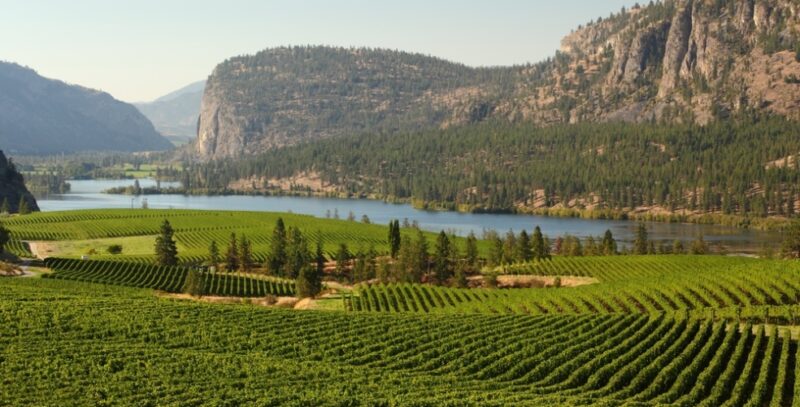
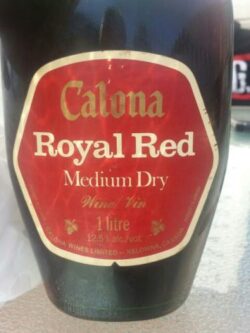
Back to the review.
And my hanging by a thread credibility.
Aside from a few excursions outside of BC, I have lived the vast bulk of my life here. Though I know little about the world of wine, I do have a reasonable sense of, and appreciation for, BC’s history: in particular, its political history. Valleys of Wine pulls no punches. The growth of the BC Wine Industry, primarily from the 1920s on, is as much a story of the political vineyard of the myriad valleys of wine.
*
There is no denying that Luke Whittall knows a massive amount about BC wine, vineyard folk, and wine folklore. Valleys of Wine is no bagatelle cellar piece of work. Throughout the tome, solid details come flying at you. Facts matter, as we hear more frequently these days than perhaps in earlier times. I was pleased to be told, for example, that “The first two commercial wineries in the province were located on Vancouver Island.” Wineries! Not vineyards. I confess, given my previously noted watered down knowledge of wine, that I assumed they were the same. It took a while to grasp the difference. Potatoes! Vodka! Vineyards! Wineries!
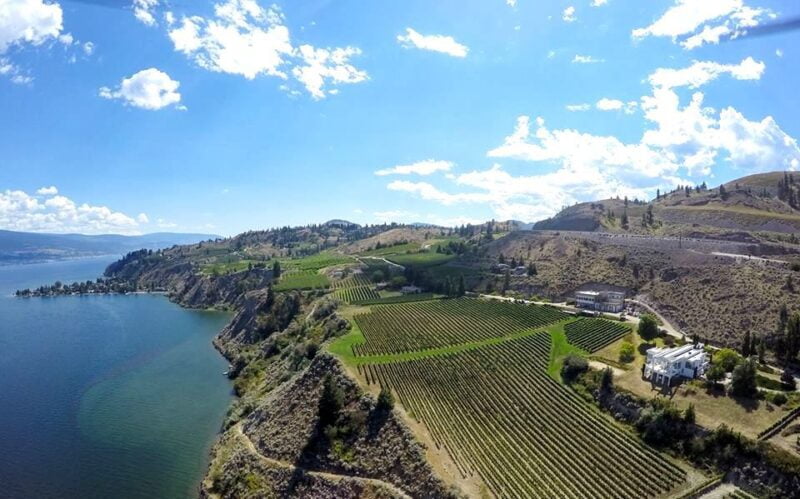
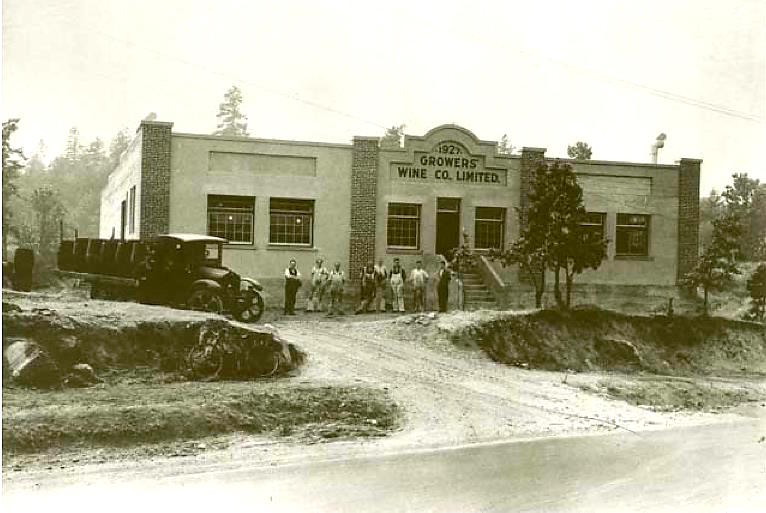

Once I had picked up the basics, I was able to enjoy much more of the history offered by Whittall, not only his detailed growth of the BC Wine industry but the concomitant history of BC’s general alcohol ups and downs. Whittall probes this history in entertaining fashion. Going back as far as Governor James Douglas, a fanatical teetotaler who believed that alcohol was, as Whittall notes, a “great destroyer of man’s vitality and integrity,” he then adds that “the tradition of taxation as a means of controlling liquor was established in those early days of BC’s history.” Fast forward a few decades, and a passel of various wine producing berries and other details I will leave for any reader who might care to, to process on their own, and we bear witness to a blatant overlap, to be kind, of the world of the business of wine and the political universe. In 1922, shortly after BC’s brief prohibition era (1917-21, a whole other story) concluded, the first winery, Growers’ Wine Company Ltd., was formed in Victoria.
The company flourished and, in 1927, Herbert Anscomb became General Manager. He was, as Whittall delightfully details, an amazingly versatile fellow, “elected reeve of Oak Bay in 1925 and then mayor of Victoria in 1928.” A few years later, he moved onto the provincial political scene:
Anscomb’s highly successful co-careers, managing Growers’ and an elected official, helped Growers’ become the largest winery in the province. He apparently had no qualms about holding company management and elected positions simultaneously, even when the beneficiary of some of the policies he proposed was clearly Growers’.
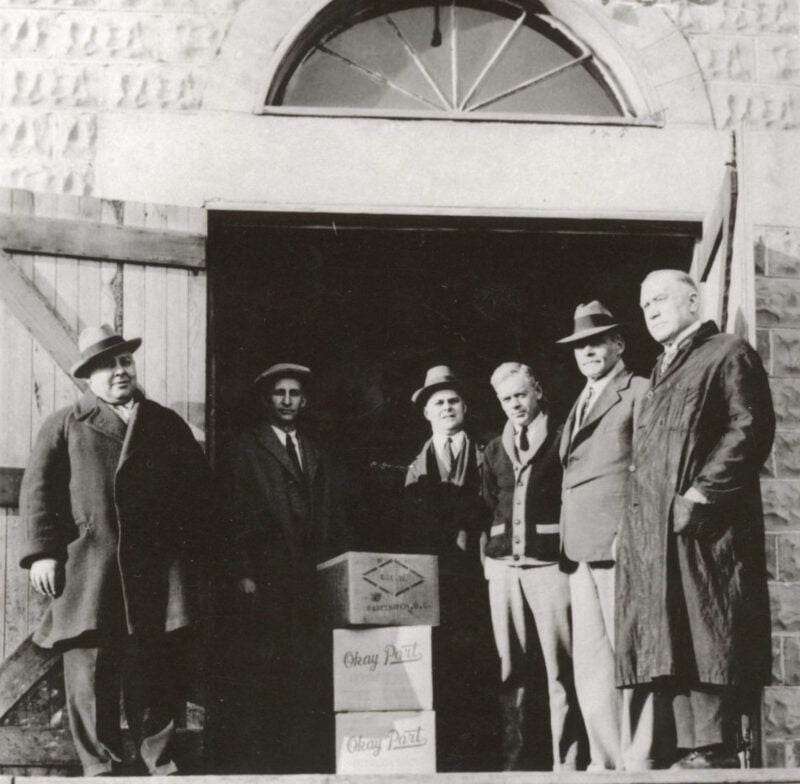
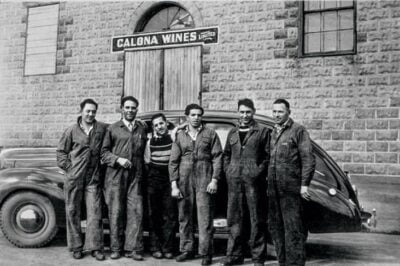
Valleys of Wine is rich in these sorts of details. Many of Whittall’s stories have more to do with who bought what and what they did with what they bought, and what type of grape was used, or was not. Grape groupies will no doubt be entranced by the wealth of minutiae that he relates. This reviewer was more than content to dwell on and revel in the political trivia. All that aside, Valleys of Wine is an excellent document that captures in meticulous detail the complex journey many have taken to make BC Wine, its vineyards, and its wineries, many of which are now vibrant and expansive businesses and tourist destinations.
Denman Island and Hornby Island: As I live on Denman Island and feel moderately attuned to adjacent Hornby Island, I am compelled to note that we too have dips and valleys on our two Islands and, more to the point, wineries and vineyards in those little pockets of pastoral land. Whittall makes no mention of them. Not that he was obliged to, although, given his observation that Vancouver Island was home to the first BC wineries, it might have been courteous, not to say informative to give a small shout out to them. So, for the record, perhaps incomplete, Hornby Island has at least three vineyards/wineries: Hornby Island Estate Winery (1999), Isla de Lerena Vineyard (2002), and Middle Mountain Mead (2004).
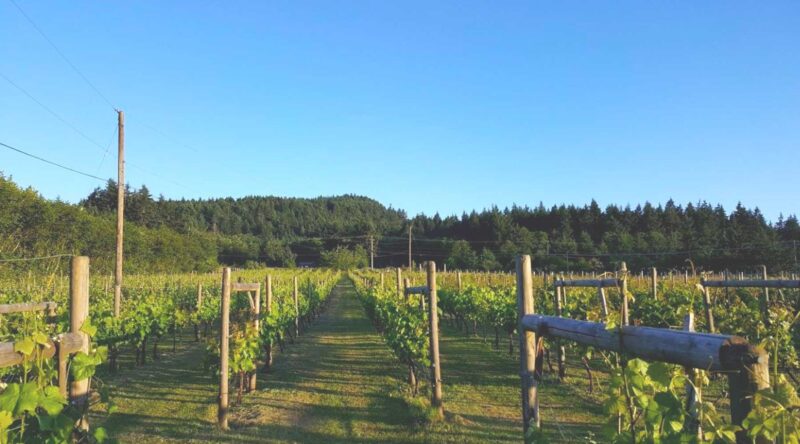
Denman Island has a more recent example: Corlan Farm Vineyard and Winery broke ground in 2006 and produced its first wine in 2015.
Even as I offer these few localized examples of wineries and vineyards overlooked by Luke Whittall, I am opening myself up to a similar charge. Clearly there are any number of other unacknowledged similar enterprises up and down Vancouver Island. As someone once said, some days you simply can’t win, or wine, for losing.
COVID-19 and Wine: I sense the need to mention COVID-19 again and at least acknowledge that the wine industry has no doubt been impacted by the pandemic. See here and here for links might offer further information for the energetic reader of this review.
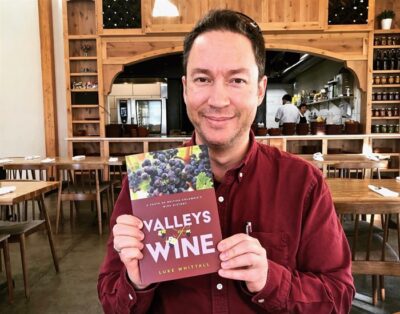
Whittall, towards the end of his book, offers an interesting metaphor, stating that:
Appreciating all wine and particularly BC wine at this point in time requires knowing a little about the people who made it. It is like appreciating a portrait of Yousuf Karsh, the famous Armenian-Canadian portrait photographer. Karsh’s photographs were technically brilliant compositionally but were nothing more than interesting photos unless something was known about the subject…. [similarly] knowing the wine story can elevate the experience.
While I have difficulty appreciating the metaphor, I acknowledge that there may be those who will. As for me, give me a Karsh portrait and a handy glass of house red any day.
*

Bill Engleson is an author and retired child protection social worker. Born in Powell River and raised in Nanaimo, he spent his first year of life trapped aboard his parents’ leaky fishboat. He lived in New Westminster for most of his adult years before retiring to Denman Island in 2004. He writes long and flash fiction, essays, and poetry. Occasionally he still writes letters to the editor. He self-published his first novel, Like a Child to Home, in 2013. Silver Bow Publishing released his second book, a collection of humorous literary essays titled Confessions of an Inadvertently Gentrifying Soul, in 2016. He is working on several new projects including a prequel to his first novel entitled Drawn Towards the Sun, a mystery, originally titled Bloodhound Days but recently revised to A Short Rope on a Nasty Night, and a collection of homegrown, satirical essays, DIRA Diary: Tall Tales of Democracy in Traction. Visit his website-blog. Editor’s note: Bill Engleson has reviewed books by JG Toews, Jack Knox, Jack Knox (again), and Mike McCardell for The Ormsby Review. He has also written an essay on Drinkwater Library on Denman Island.
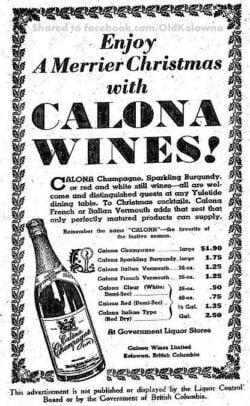
*
The British Columbia Review
Publisher and Editor: Richard Mackie
Formerly The Ormsby Review, The British Columbia Review is an on-line journal service for in-depth coverage of BC books and writers. The Advisory Board consists of Jean Barman, Wade Davis, Robin Fisher, Cole Harris, Hugh Johnston, Kathy Mezei, Patricia Roy, Maria Tippett, and Graeme Wynn. Provincial Government Patron (since September 2018): Creative BC. Honorary Patron: Yosef Wosk. Scholarly Patron: SFU Graduate Liberal Studies.
“Only connect.” – E.M. Forster
4 comments on “#951 New wine in new bottles”